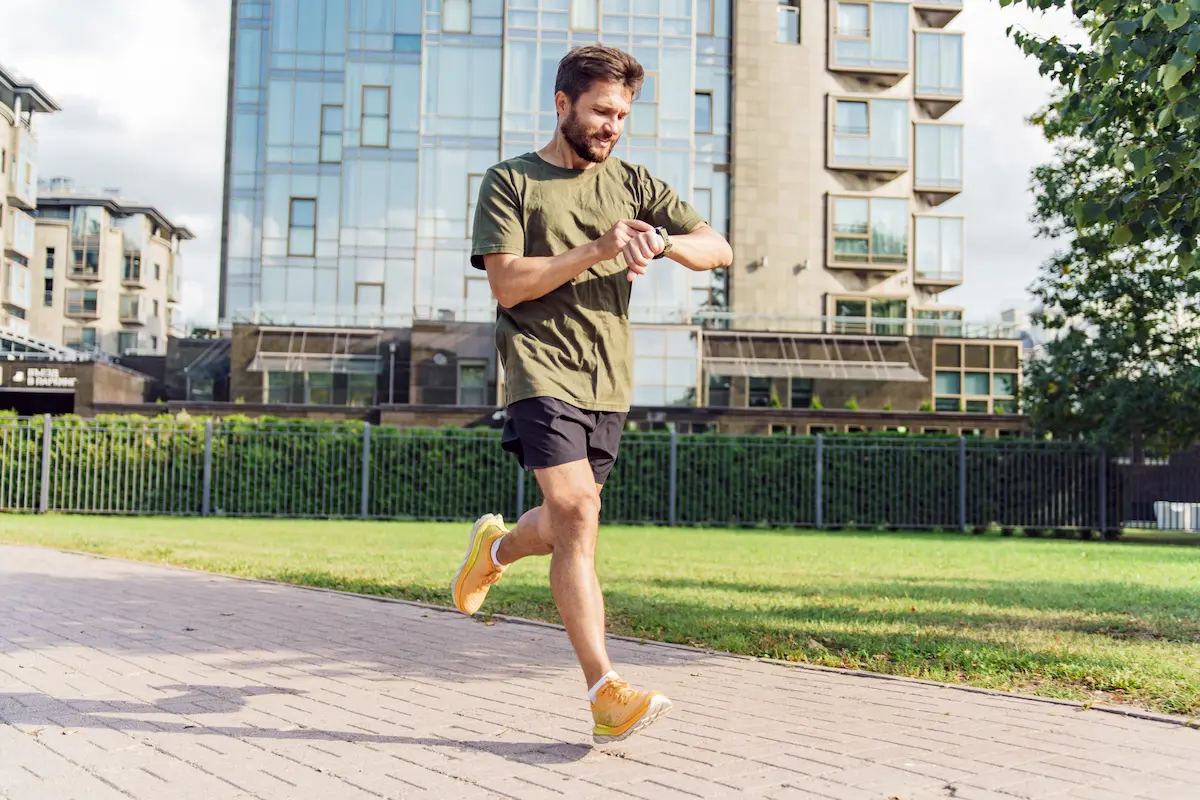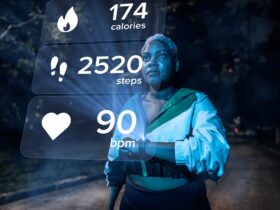Have you ever wondered how your running speed compares not just to other people, but to the animal kingdom at large?
The quest to understand human running capabilities extends beyond simple curiosity, touching on our survival instincts and evolutionary success.
Running is a fundamental human ability that reflects our physical fitness and evolutionary heritage.
While professional athletes might reach breathtaking speeds, the average person’s running pace is a more modest affair.
In this article, we explore what factors influence how fast you can run, from biological constraints to environmental effects.
By understanding these factors, we can not only improve our own performance but also appreciate the remarkable adaptability of the human species.
How is Running Speed Measured? Understanding the Basics
Running speed is often measured as a function of distance covered per unit time.
Typically, the metric system of measurement is utilized, with speeds expressed in meters per second (mps) or kilometers per hour (km/h). However, miles per hour (mph) remains widely used in countries like the United States and the United Kingdom.
To gauge an individual’s running pace, specific formulas employ various physiological factors, including stride length and cadence (steps per minute).
Calculating running speed involves dividing the distance traveled by the elapsed time. For instance, suppose you cover a mile in 8 minutes; your speed would be calculated as:
Miles per hour = Distance (miles) ÷ Time (hours)
This method allows for the simple calculation of average pace but fails to account for variations in terrain, fatigue levels, and other external factors contributing to overall running performance.
What’s the average human running speed ?
| 🏃 Experience | 👨 Men’s Pace (min/s) | 👨 Men’s Speed (km/h) | 👩 Women’s Pace (min/s) | 👩 Women’s Speed (km/h) |
|---|---|---|---|---|
| Beginner | 8 min/s | 7.5 km/h | 9 min/s | 6.7 km/h |
| Intermediate | 6 min/s | 10 km/h | 7 min/s | 8.6 km/h |
| Advanced | 5 min/s | 12 km/h | 6 min/s | 10 km/h |
| Elite | 4 min/s | 15 km/h | 4.5 min/s | 13.3 km/h |
How human perform VS animals :
| 🏃♂️ Species | 🚀 Top Speed (km/h) | 🚀 Top Speed (mph) |
|---|---|---|
| Human (Usain Bolt) | 44.7 km/h | 27.8 mph |
| Cheetah | 112 km/h | 70 mph |
| Peregrine Falcon (Diving) | 389 km/h | 242 mph |
| Greyhound | 72 km/h | 45 mph |
| Pronghorn Antelope | 88 km/h | 55 mph |
| Springbok | 88 km/h | 55 mph |
| Quarter Horse | 88 km/h | 55 mph |
Key Factors That Affect Your Running Speed
Factors Influencing Running Speed:
- Age: Young children quickly develop running skills, peaking in speed during their twenties before experiencing a gradual slowdown.
- Gender: Men generally run faster than women, largely due to differences in muscle mass and aerobic capacity, though the gap is narrowing with increased female participation in sports.
- Training: Regular, targeted physical training can substantially enhance speed and endurance, with key training methods including:
- Interval training to boost speed and cardiovascular health.
- Hill repeats to increase leg strength and power.
- Tempo runs to improve metabolic efficiency.
- Long-distance workouts to enhance endurance and mental toughness.
Age and Gender
A considerable factor determining an individual’s running ability is their age. Generally, children begin achieving discernable running speeds between the ages of 5 and 7.
As they grow older, their strength, coordination, and endurance improve, leading to enhanced running performance. Most people reach their peak of athletic prowess in their early twenties, followed by a gradual decline in running ability into their senior years.
When it comes to gender, males typically exhibit faster average running speeds than females.
This is primarily attributed to physiological differences in muscle mass and cardiovascular fitness between the sexes.
However, in recent years, the gap has been narrowing significantly as more women participate in various levels of competitive sports and engage in structured training programs.
Fitness Level and Training
A critical aspect influencing an individual’s running speed is their overall fitness level and the type of physical training they undergo.
A sedentary lifestyle can negatively impact one’s ability to run at optimal speeds, while embracing regular exercise and following a targeted training plan can lead to improvements in both endurance and pace.
Hello runners works to increase essential factors such as aerobic capacity, muscular strength, and flexibility through exercises like interval training, hill repeats, tempo runs, and long-distance workouts.
These types of training sessions not only improve physical conditioning but also help develop essential mental skills like focus and determination necessary for maintaining high speeds over prolonged periods.
Breaking Down Average Human Running Speed: Sprinting vs. Distance Running

Sprinting Performance
In short-distance events like sprinting, runners aim to push their bodies to achieve maximum speeds quickly.
World-class sprinters often clock impressive times, with elite male athletes completing 100 meters in under 10 seconds and females achieving similar feats in under 11 seconds. This translates to speeds upwards of 22 mph (35 km/h) and 20 mph (32 km/h) for men and women, respectively.
The highest human speeds ever recorded were achieved by Jamaican sprinter Usain Bolt during the 2009 World Athletics Championship in Berlin.
He completed the 100-meter race in merely 9.58 seconds, reaching an astounding top speed of 27.8 mph (44.7 km/h).
Distance Running
In comparison to sprinting, distance running entails maintaining a sustained pace over longer periods.
Marathoners and ultra-marathoners often focus on endurance rather than top speeds, so their average paces tend to be slower.
A proficient recreational marathon runner male would typically maintain an average speed between 6-9 mph (10-14 km/h), while a female counterpart would clock in at around 5-8 mph (8-12 km/h).
The fastest recorded marathon time is held by Eliud Kipchoge from Kenya, who completed the 26.2-mile course in a staggering 2:01:39 during the 2018 Berlin Marathon.
This outstanding performance translates to an average pace of 12.94 mph (20.81 km/h) maintained throughout the entire duration.
Humans vs. Other Species: How We Stack Up
Although humans are relatively swift compared to other animals, there are several species that easily outpace us.
For example, cheetahs are known to reach speeds of up to 70 mph (112 km/h), whereas greyhound dogs can effortlessly attain velocities approaching 43 mph (69 km/h). Even the common house cat boasts a superior top speed, reaching 29 mph (47 km/h) under the right conditions.
Despite falling short in raw speed, humans possess unique cardiorespiratory adaptations that allow us to excel in endurance events, particularly long-distance races.
Researchers have postulated that our ancestors relied upon exceptional stamina to tire out prey during hunting sessions, constituting one of the vital skills responsible for our species’ survival and development into modern times.
Remember…
As we’ve seen, the average human running speed is influenced by a variety of factors, each playing a critical role in how fast we can move.
While we may not rival a cheetah or even a house cat in raw speed, humans possess unparalleled endurance, a testament to our evolutionary prowess as persistence hunters.
Whether you’re a beginner looking to improve your pace or an experienced runner aiming to optimize performance, understanding these factors can lead to more effective training strategies and a deeper appreciation for our place in the natural world.
Next time you lace up your running shoes, remember that with each step, you’re engaging in an activity that connects you to the very essence of being human — our ability to run not just for survival, but for sport, health, and pleasure.







